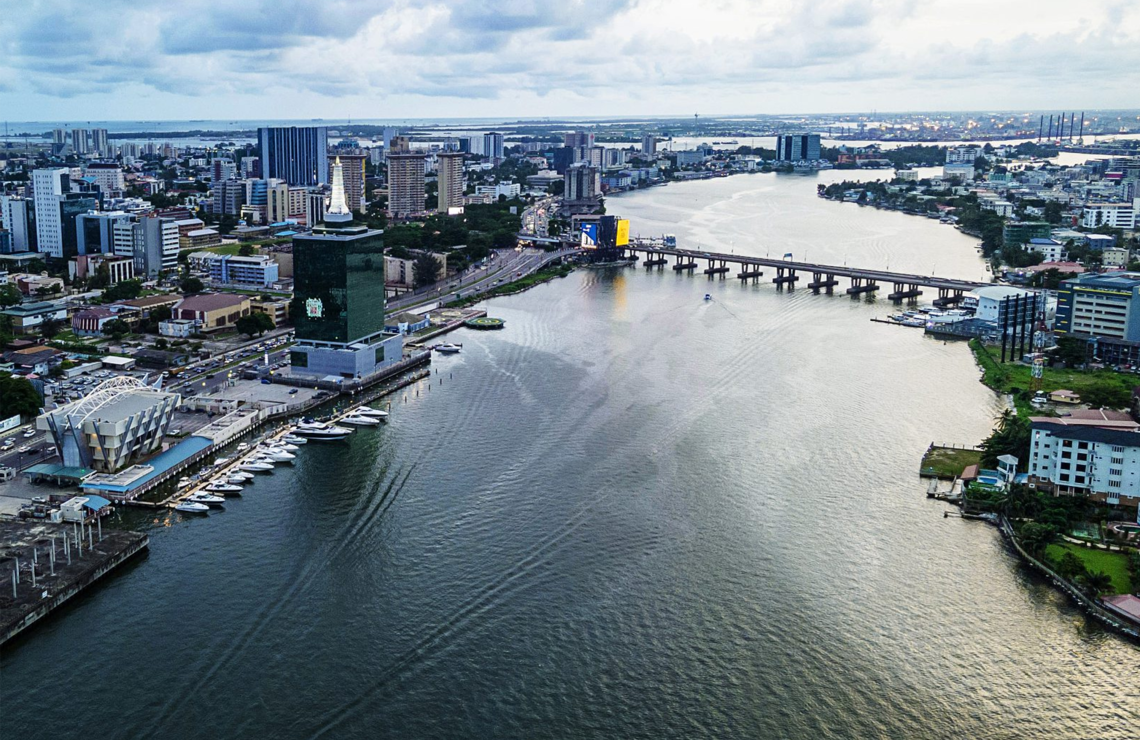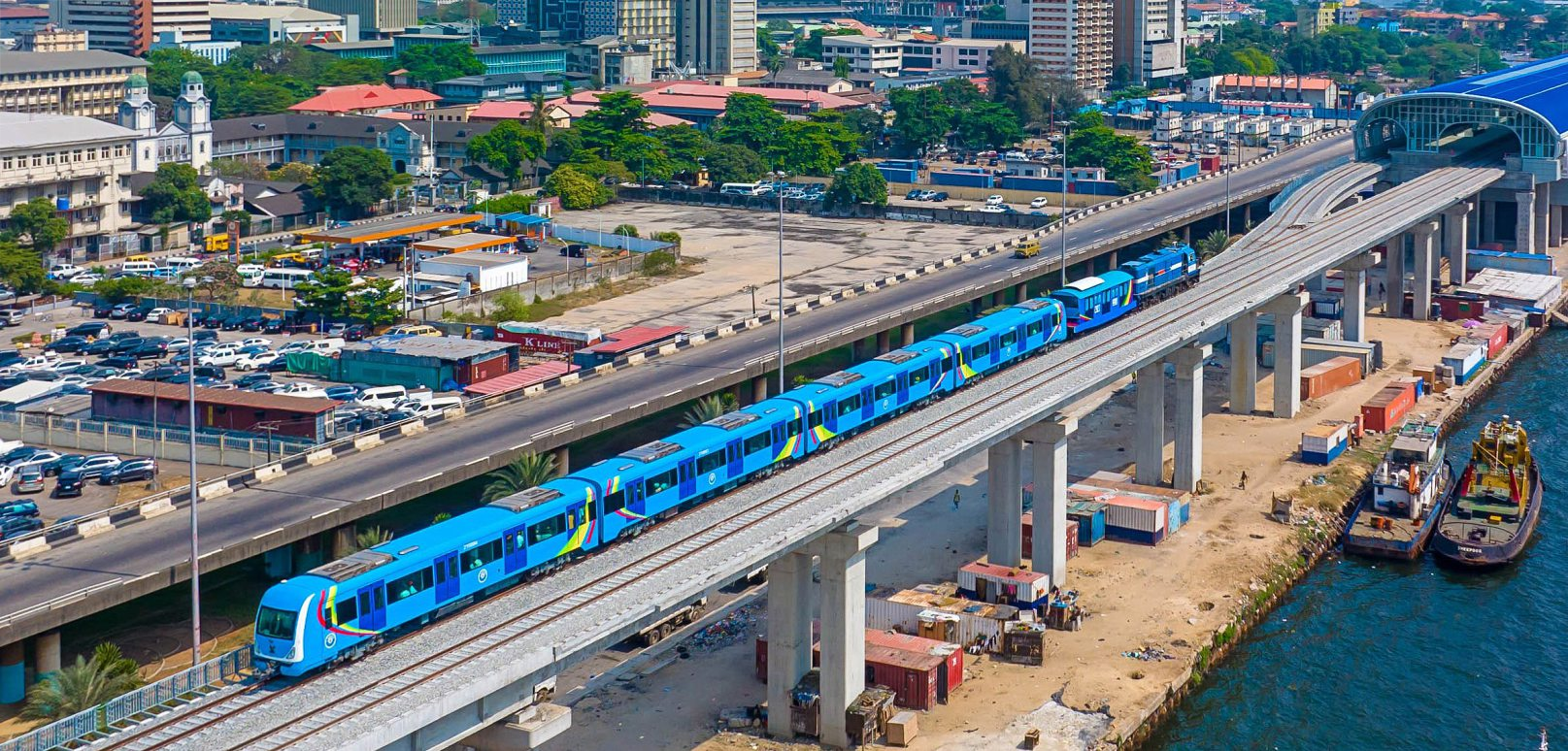
Lagos,
a megalopolis in the making
Nigeria’s economic and financial capital is growing at breakneck speed. Accounting for one-third of national GDP in 2022, the mega-city demonstrates once again that it is the country’s locomotive.
If Lagos were a country, it would rank among Africa’s largest economies. Its rising GDP is evidence of a booming city that attracts national and international investors. Key sectors include financial services, entertainment, technology and oil.
The country’s largest city is in the smallest state, also called Lagos, which borders on Ogun State in Nigeria, Benin and the Guinean coast on the Atlantic Ocean. Built on a string of islands surrounded by coves and a lagoon, it comprises Lagos Island and Lagos Mainland. Africa’s largest urban centre by population and the world’s 12th-largest megalopolis, the fast-growing conurbation achieved megalopolis status in 1995 when its population exceeded 10 million, according to UN-Habitat. Today, it stands at about 20 million.
Lagos Island, known for its high concentration of rich people, politicians, expatriates and modern infrastructure, has a little bit of a European air about it that can also be found in Ikoyi, Banana Island, Victoria Island, Victoria Garden City and other affluent neighbourhoods. Designed and planned for luxury lifestyles, the island boasts many recreational areas, like beaches, and a continuous power supply. Lagos Island is also home to the administrative centre, most of the banks and financial institutions, Nigeria’s tallest building (32 floors) and the city’s most spacious hotels—but not the airport, which is on Lagos Mainland. Most residents live in the Mainland’s densely populated neighbourhoods, like Mushin, OshodiIsolo, Ebute Metta and Ikorodu. Except for a few well developed areas such as Ikeja, Maryland and Surulere, Lagos Mainland is known for its poor roads, traffic jams and power cuts. Almost every household, even in single-room units, use generators (nicknamed “I pass my neighbour” due to the noise they make) and at night the streets are lit by car headlights. In addition to noisy generators, the sound of car horns and peddlers’ whistles are characteristic of Lagos Mainland and the shantytowns where many people are jobless, which generates crime.
However, living on the mainland has some advantages. The cost of living is generally lower. Fresh and cooked food is more affordable than on the island and local restaurants offer traditional, filling meals for less than a euro. This is also where the lowest rents are found.
CHAOTIC COMMUTING
Whatever side of the lagoon they live on and whatever their social status or geographical location, everybody gets up early. People must rise at four to reach work by eight, and it is almost impossible to know what time they will get back home. It is sometimes stressful, but, as in any big city, there are off-peak hours. Vehicles are always available on the streets to provide transport at any time of the day or night.
Three bridges connect Lagos Island and Lagos Mainland: the Eko, Carter and Third Mainland, also called the Ibrahim Babangida Bridge, which, at 11.8km, is Nigeria’s longest span and the second-longest in Africa. Traffic is constant from morning to night. Traffic jams, battered vehicles and impatient drivers make driving in Lagos a veritable nightmare. Packed minibuses and motorcycle taxis called okada are dangerous and worsen congestion so badly that the government has made several attempts to ban them.
However, the Lagos State government is working to solving the problem. Its new rapid transit bus system (BRT) has forever changed how people get about. Launched by President Tinubu when he was the state’s governor, the BRT began operating in 2008 with buses running in specially designated lanes. Successive administrations have extended its routes to other areas and, with a capacity of over 180,000 passengers a day, it has considerably eased congestion, enabling residents to get to work on time.
A HUGE POTENTIAL

Major investments have also improved public rail transport, as the recent opening of the electric blue and red lines attests. The trains speed along at 80 kilometres an hour on elevated tracks that span the lagoon, connecting the city’s two parts. On September 4, 2023, government officials cut the ribbon on the 13km-long, five-station first stretch. Once finished, the network will certainly reduce congestion, especially since most Lagos Mainland residents work on Lagos Island.
With its young, vibrant population and thriving entrepreneurial ecosystem, Lagos has huge potential. The city is home to many cutting-edge companies—making it a promising start-up hub—the national headquarters of tech giants, including Google, Microsoft and Oracle, and Computer Village, Africa’s largest technology market, which draws about 100,000 visitors a day and generates over two billion dollars in annual revenue. Nicknamed Silicon Lagoon, it has become a model for other Nigerian and even African states.
Balogun market, with its two km of stalls and job creation. International trade is facilitated by the State’s largest and busiest port complex and Murtala Muhammed International Airport in Ikeja, the sub-region’s busiest airport, which handled some 5.7 million passengers in 2021. In 2022, the top contributors to Lagos’s spectacular $85 billion share of Nigeria’s GDP (20% of the total) were financial services, entertainment, information technology, telecommunications, oil, education, politics, tourism, art and fashion. Like most African cities, Lagos has a vibrant informal economy encompassing markets, small businesses and subsistence activities that make a substantial contribution to sales in the city.
INVENTING NEW PROSPECTS
However, behind the impressive figures lie more complex social realities, such as inequality and development issues. Soaring population growth and rampant urbanization are significant challenges that have led to a housing shortage, inadequate public transportation, traffic jams and safety issues. Poverty and the housing shortage have forced millions of people to live in shantytowns and informal suburbs, which pose security problems and require constant attention. Lagos State’s modern development roadmap has been drawn up to meet challenges and make the city Africa’s model megalopolis. The focus is on developing public transport, healthcare, education, the environment, tourism, leisure, security, sports and the empowerment of women and young people. Infrastructure development includes building and rehabilitating roads, railroads, river transport and jetties, while the social aspect encompasses public schools, housing, health, environmental regeneration, food security, safety and emergency management.
Major projects reshaping the city’s economy include the construction of 820-hectare Eko Atlantic City begun by Lagos State in 2007, an African version of Dubai on an artificial island off the coast of Victoria Island that will transform the megalopolis to attract tourists and businessmen. Created in 2006, the 30km2 Lekki free zone includes industrial, logistics and business parks, real estate development and its own cutting-edge power and water treatment plant. Nigeria’s largest port, Lekki is also one of the biggest in West Africa. It has a deep-water multipurpose area in the heart of the Lagos free zone designed to handle 2.4 million standard containers per year. The mega-refinery owned by Mr. Dangote, Africa’s richest man, is also there, providing enough oil to generate 12,000 MW of electricity and employing 57,000 people.
Lagos, a sprawling, vibrant metropolis, offers amazing opportunities while facing major challenges. The city’s future depends on how it reconciles economic growth with boosting its residents’ living standards.